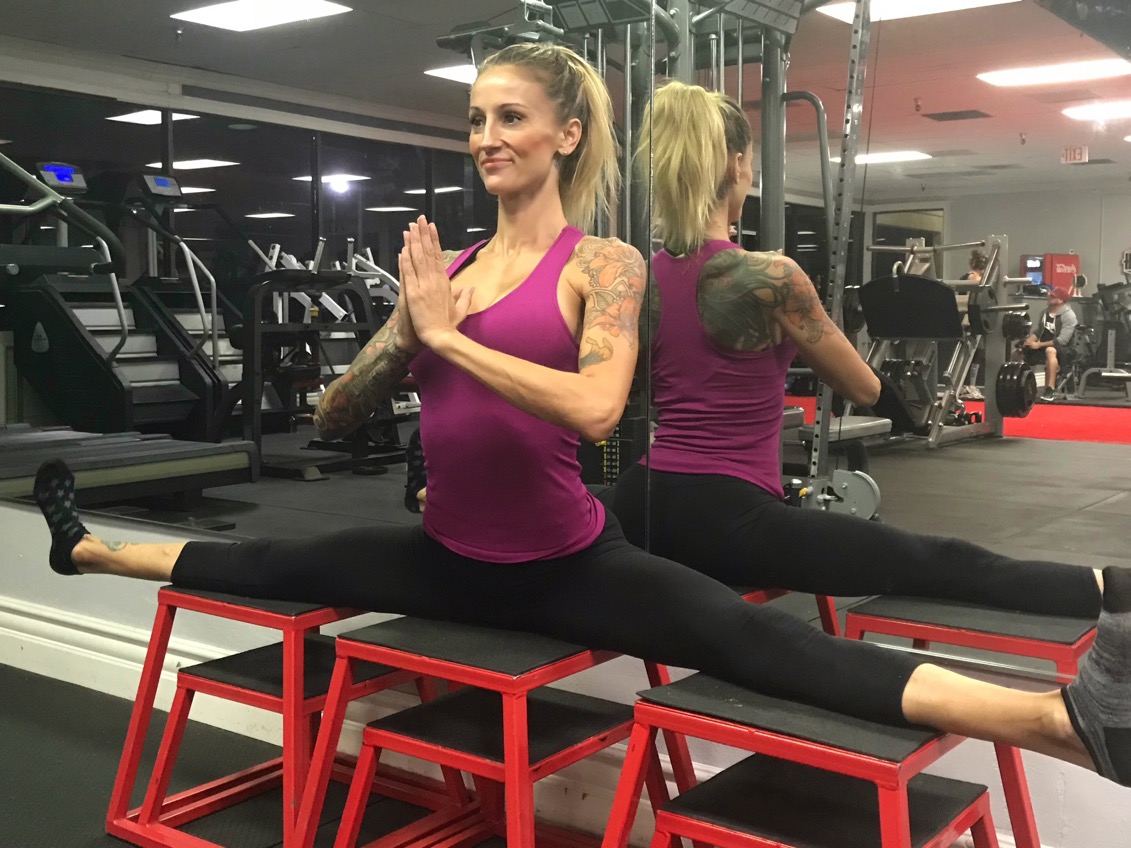
Destiny Owen, Certified Expert Ashtanga Yoga Instructor
Contrary to public belief, by stretching correctly you can actually increase the body’s ability to gain muscle up to 70%. Most people think that being flexible is going to limit their gains, but this is not true if done correctly. In order to avoid injury during your yoga practice and get the most benefits from each asana (posture), you must follow a particular series of stretches.
But first, let’s go over what exactly the difference is between stretching and yoga. Many people often ask, “should I stretch before or after I workout?”
The answer is both but in a very particular fashion. There are also many variables to take into consideration before you choose your stretching routine. I bet you had no idea stretching was so complicated? Well, I’m here to help.
If you are planning to lift heavy, the best thing to do is quick isolated static stretches for about 10 seconds on the muscles you will be using for your planned workout. When I say isolated, I mean just stretching one muscle at a time. When I say static I’m referring to holding the position, rather than bouncing in and out of the stretch. For example, if it were leg day before you work out it would be best to do a simple quad stretch, hamstring stretch, calf stretch, and hip flexor stretch. Always remember the general rule on stretching time is 5 deep breaths in and out through only the nose. This is equivalent to about 15 seconds.
The reason you should keep your stretches minimal before lifting heavy is that you need those muscle fibers compacted. This will help you to avoid injury. Once you have finished working out, you definitely want to spend about ten to fifteen minutes completing more dynamic stretches. If we continue to use leg day as an example, your dynamic stretches can involve more than one muscle group at a time. A pigeon pose is a great option since it stretches the quad and hip flexors at the same time.
Now, on a different level, if you are going to run per se, you can absolutely add a couple of dynamic stretches before your run, but still, take the most time-stretching after.
Now that we have stretched out of the way, let’s discuss yoga. It’s all the same, isn’t it? Absolutely not!
There are many various types of yoga out there, but they generally follow the same rules. There is a very specific way to execute your poses in a proper sequence in order to avoid injury and to warm the body from the inside out. When warming the body from the inside out your organs get tremendous benefits. This is why pelvic breathing is a must during yoga. Through your entire practice, you should only be using the nose to breathe in and out. Nose breath actually brings new oxygen into our bodies. Mouth breathing utilizes recycled breath. Hence why we pant when we feel out of breath. Oxygen is what fuels our muscles, so you definitely want to learn to breathe correctly.
I, myself, am a Certified Expert Ashtanga Yoga Instructor, but as I mentioned earlier, other flows tend to follow similar sequences beginning with a few vinyasas, (up dog, down dog). Then move along to a standing series of asanas (postures). Once completed, we begin our balancing series before finally getting to our seated series. Depending on your level, after your seated asanas would be where to add inversions. There are numerous modifications available for these particular poses that enable you to get the same benefits without handstands or headstands and etc. If you need modifications you can contact me at https://DestinyOwen.com, and I’d be happy to help. Or follow along some of my classes on my Youtube channel.
Then finally you have made it to lie down on your mat. These poses tend to be a little less intense so that your heart rate can start to lower. But, don’t get too excited yet, because you still have a little more work to do.
Sighing is the body’s natural way of relaxing. With this in mind, you want to take at least 3 big breaths through the nose lifting the arms above your head. Then exhale out of the mouth as though you are sighing. This is going to cue your body to begin to go back to a normal heart rate.
If you would like to learn more about the biology behind this visit Https://CureIn4.com
Savasana, or “corpse pose” should always be your final pose. This is how we seal in our practice and meditate on positive thoughts. This pose is often overlooked because we tend to always have so much going on, or we are in a hurry. I can’t stress enough the benefits of giving this pose a little more time.
There it is! You are now a stretching and yoga professional! Have you ever wondered why we say “namaste” and bow at the ending of our practice? I’m gonna let you in on every yogi’s little secret.
Namaste means “The light in me honors and respects the light that shines in you!”



